When choosing cellular wearables, you’ll need to verify your carrier’s network compatibility and frequency band support first. Expect considerably shorter battery life compared to Wi-Fi models, typically 1-2 days with LTE usage versus several days without. Factor in monthly service costs of $5-$15 plus the device’s higher upfront price. Check standalone capabilities like voice calls and messaging quality, plus compatibility with your phone’s operating system and health apps. These fundamentals will guide your decision toward the best cellular-enabled wearable.
Understanding Cellular Network Compatibility and Carrier Support
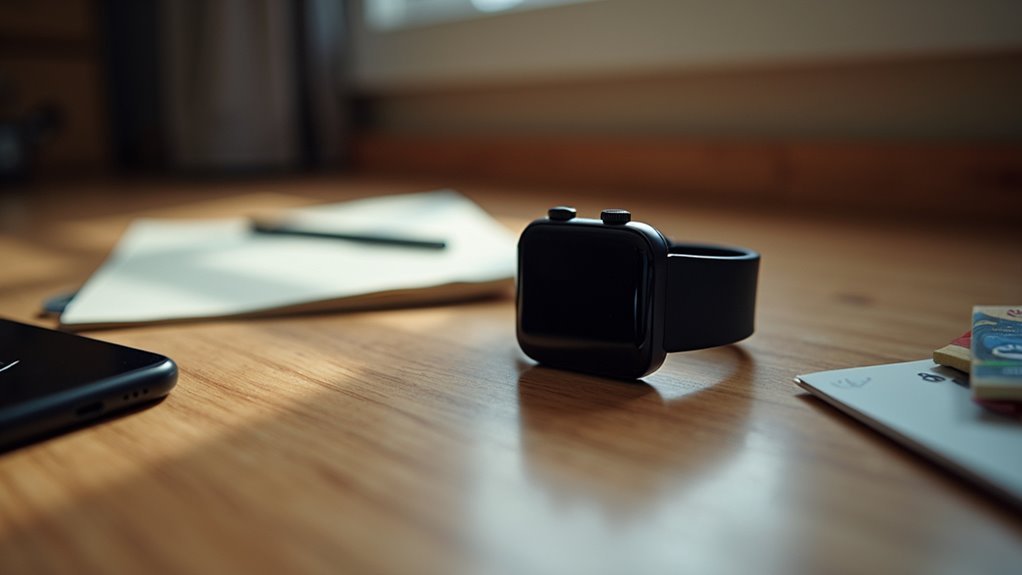
When choosing a cellular-enabled wearable, you’ll need to verify that it supports the right network standards for your region and carrier. Modern wearables typically support 4G LTE and 5G NR standards, which provide better bandwidth and reliability than legacy 2G and 3G networks that are being phased out.
You should confirm your device supports the specific frequency bands and network technologies used by your intended carrier. Not all cellular wearables work with every mobile network globally, so checking compatibility prevents connectivity issues later. The latest 5G technology offers significantly reduced latency compared to previous generations, ensuring your wearable responds quickly to commands and data requests.
Look for devices with PTCRB or GCF certification, as these validate network interoperability and guarantee compliance with global protocols. Certified wearables operate seamlessly across multiple carriers and regions, and many network operators require these certifications before allowing devices on their infrastructure.
Evaluating Battery Life Impact and Performance Considerations
You’ll notice cellular connectivity drains your wearable’s battery considerably faster than Wi-Fi-only operation since the device continuously maintains a cellular signal and transmits data.
When your smartwatch operates under LTE load—handling calls, streaming, or syncing apps—performance can suffer as the processor works harder while the battery depletes more rapidly.
Understanding these power consumption differences helps you set realistic expectations for daily usage and decide whether cellular features justify the shorter battery life. Most smartwatches with cellular capabilities offer power saver modes that can extend usage up to 12 days by limiting smart features when battery preservation becomes critical.
Cellular Vs Wi-Fi Power
Power consumption stands as the most critical differentiator between cellular and Wi-Fi connectivity in wearable devices.
Cellular data consistently drains more power due to complex encoding processes and constant communication with cell towers. You’ll notice faster battery depletion with cellular-enabled wearables compared to Wi-Fi models.
Wi-Fi operates more efficiently within its limited range, requiring less power for stable connections. However, cellular provides broader coverage at the expense of battery longevity.
In weak signal areas, your device will increase transmit power, further reducing battery life. Additionally, increased device activity from cellular use generates more heat generation, which contributes to battery drain.
Small wearables face significant challenges with cellular connectivity due to limited battery capacity. If you frequently use calling or streaming features, expect substantial battery impact.
Consider your usage patterns when choosing between these connectivity options.
Performance Under LTE Load
How considerably does LTE connectivity impact your wearable’s daily performance?
You’ll notice considerable battery drain compared to Bluetooth-only devices. LTE watches typically last 1-2 days versus several days for Bluetooth models, with battery life often dropping below 18 hours out of the box.
High data transmission rates during calls, SMS, and app synchronization create substantial energy demands.
When your watch operates standalone without a paired phone, it consumes even more power maintaining signal strength and handling data transmission.
Poor LTE reception worsens battery drain as your device increases power to maintain connectivity. Overheating issues can also occur with LTE versions regardless of whether cellular connectivity is active.
You can mitigate this by disabling LTE when unnecessary, switching to “always off” mode, and limiting GPS, Wi-Fi, and always-on display features to extend runtime considerably.
Assessing Standalone Communication Capabilities and Features
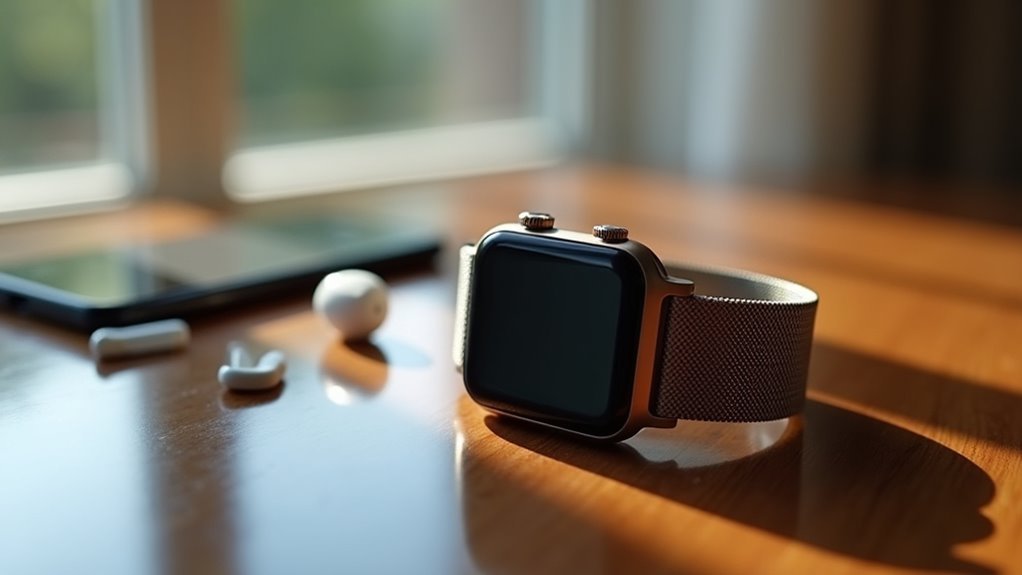
When evaluating cellular wearables, understanding their true standalone communication capabilities becomes essential for determining whether a device can genuinely replace your smartphone for basic functions.
You’ll need to verify that your chosen device supports voice calls, text messaging, and data usage through integrated cellular radios. Check compatibility with your carrier’s network and confirm whether the device uses eSIM or requires a physical SIM card.
Consider how latency and signal strength affect real-time communication quality, especially for emergency alerts.
You’ll also want reliable carrier data plans designed specifically for wearables. Look for devices that combine cellular communication with advanced health sensors and safety features like fall detection, which can autonomously trigger emergency calls without requiring smartphone connectivity. Be prepared for monthly carrier fees that typically accompany LTE-enabled wearables, as these additional costs are usually required for accessing cellular functionality.
Comparing Costs Between LTE and Wi-Fi Models
Beyond the initial appeal of cellular connectivity, you’ll face noticeably higher costs throughout your wearable’s lifespan compared to Wi-Fi-only alternatives.
LTE-enabled smartwatches typically cost double their Wi-Fi counterparts upfront, with cellular hardware adding significant manufacturing expenses. You’ll save around $100 or more choosing Wi-Fi-only models.
Monthly expenses compound these differences:
- Cellular service plans ranging from $5-$10 monthly for basic data
- Insurance protection adding $13-$15 per month for premium devices
- Hidden fees like taxes and activation charges inflating advertised prices
Wi-Fi models eliminate recurring cellular costs entirely, restricting you to available wireless networks but dramatically reducing total ownership expenses. Many users who carry phones during outdoor activities find that LTE connectivity becomes an unnecessary premium feature for their actual usage patterns.
Your choice depends on whether standalone connectivity justifies paying $10-$30+ monthly versus minimal ongoing costs.
Analyzing Health Monitoring and Fitness Tracking Functions
While cellular connectivity might be your primary consideration, the health monitoring and fitness tracking capabilities of your chosen wearable will likely determine its daily value and long-term usefulness.
Look for devices offering extensive ECG capabilities to monitor heart rhythms and detect arrhythmias. Blood oxygen saturation monitoring helps identify sleep apnea and respiratory issues, while continuous heart rate tracking provides valuable fitness and stress data.
Advanced ECG monitoring and blood oxygen tracking transform your wearable into a comprehensive health guardian for early detection.
For fitness enthusiasts, prioritize wearables with GPS tracking, VO2 max estimation, and detailed workout analysis. Sleep quality tracking offers insights into rest patterns and recovery.
Consider devices that integrate seamlessly with health apps like Apple Health or Google Fit, ensuring your data centralizes effectively. Check accuracy ratings, particularly for ECG and heart rate monitoring, as reliable data quality determines the device’s true health monitoring value. The wireless connectivity capabilities enable these wearables to interact with other devices for comprehensive data analysis and display.
Determining Device Compatibility and User Interface Requirements
You’ll need to verify your chosen wearable works seamlessly across your existing devices and operating systems before making a purchase.
Check whether your preferred carrier networks support the device’s cellular bands and frequencies in your area to guarantee reliable connectivity. Research carrier coverage maps to identify areas with the strongest signal strength for your intended usage locations.
Consider how easily you can navigate the interface for essential functions like calls, messages, and network management without frustration.
Cross-Platform Device Compatibility
How can you guarantee your cellular wearable works seamlessly across different devices and platforms?
You’ll need to verify thorough compatibility across iOS and Android systems while making sure your companion app functions identically on both platforms.
Focus on these critical compatibility factors:
- Data Syncing Reliability – Test that health metrics, notifications, and settings transfer smoothly between your wearable and different smartphones without data loss or corruption.
- Platform Integration – Confirm your device connects properly with Apple Health, Google Fit, and other ecosystem-specific services you’re already using.
- API Connectivity – Make certain the wearable’s API easily connects with your existing smart home devices, fitness equipment, and third-party applications.
Don’t overlook Bluetooth 5.0 compatibility and standardized protocols that enable cross-platform functionality. Modern development frameworks now utilize cross-platform compatibility to create applications from a single codebase that work efficiently across multiple wearable operating systems.
Test extensively with various devices before committing.
Carrier Network Support
Before purchasing any cellular wearable, you must verify it’s certified and compatible with your carrier’s network infrastructure.
Check that your device has PTCRB, FCC, and any carrier-specific certifications required for network compatibility. You’ll need to ascertain it supports the frequency bands your carrier uses, like bands 12, 13, or 66 in the U.S., plus current network technologies including LTE and 5G.
Look for wearables that offer direct access to carrier settings and APN management tools within their interface. Your device should display clear network signal indicators and provide intuitive error messaging when connectivity issues arise.
Verify compatibility by checking your carrier’s approved device list, reading customer reviews, and confirming technical support availability for carrier-specific problems. Obtaining proper certifications prevents deployment delays that could affect your device’s ability to connect to cellular networks when you need it most.
Interface Navigation Ease
What makes a cellular wearable truly functional isn’t just its network connectivity—it’s how seamlessly you can navigate its interface and how well it integrates with your existing devices.
Your experience depends heavily on compatibility between your smartphone’s OS and the wearable’s requirements.
Consider these navigation essentials:
- Touch responsiveness – Swipe gestures and tap controls should feel fluid without lag on the small display.
- Physical alternatives – Rotating bezels, digital crowns, or buttons provide tactile feedback when touchscreen isn’t practical.
- Voice command reliability – Hands-free interaction reduces navigation complexity during activities.
Before purchasing, verify your phone meets the device’s OS requirements.
Samsung watches need Android 5.0+, while Pixel watches require Android 8.0 or newer. However, non-Samsung Android devices typically require higher RAM specifications to run Galaxy Watch6 models compared to Samsung phones themselves.
Cross-platform limitations can restrict features considerably.
Planning for Data Plans and Ongoing Service Expenses
When you’re considering a cellular smartwatch, understanding the ongoing financial commitment becomes just as important as the device’s upfront cost. Monthly data plans typically range from $5 to $15, depending on your carrier and features.
T-Mobile offers budget-friendly options starting at $5 monthly, while Verizon provides unlimited plans with international roaming. SpeedTalk Mobile delivers competitive rates at $7.50 monthly.
Look for carriers offering number sharing with your smartphone and bundled discounts. Monitor your data usage regularly to avoid overage charges, and consider customizable plans that match your actual needs.
Some carriers provide plan flexibility, allowing upgrades when requirements change. Many providers offer annual upgrade eligibility for customers who maintain qualifying service plans and meet device payment requirements. Factor these recurring expenses into your total ownership cost, as they’ll considerably impact your smartwatch’s long-term affordability and value proposition.
Frequently Asked Questions
Can I Use My Cellular Wearable Internationally Without Additional Charges?
You’ll need to check your carrier’s plan details for international coverage. Most cellular wearable plans don’t include free international roaming, so you’ll likely face additional charges when traveling abroad.
How Often Do Cellular Wearables Receive Software and Security Updates?
You’ll receive cellular wearable updates monthly to quarterly, depending on your manufacturer. Security patches come regularly through over-the-air downloads, often automatically installing overnight while you’re charging your device.
What Happens to My Wearable’s Cellular Connection During Emergencies or Outages?
Your wearable’s cellular connection may fail during network outages, but devices with backup connectivity like Wi-Fi or satellite can maintain emergency communication. Dead zones and local infrastructure damage affect reliability considerably.
Are There Size and Comfort Differences Between Cellular and Wi-Fi Models?
You’ll find minimal size and comfort differences between cellular and Wi-Fi models. Both typically share identical dimensions, materials, and strap options, with cellular versions only slightly thicker due to additional components.
Can I Transfer My Existing Phone Number to My Cellular Wearable?
Yes, you can transfer your existing phone number to a cellular wearable, but the process varies by carrier. You’ll likely need to contact customer service or visit a store for assistance with the transfer.

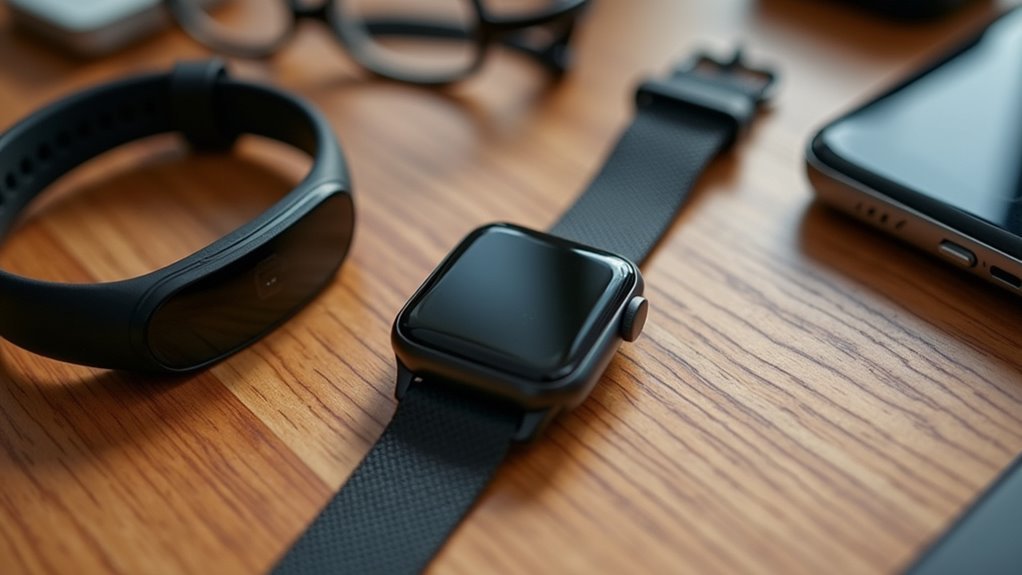

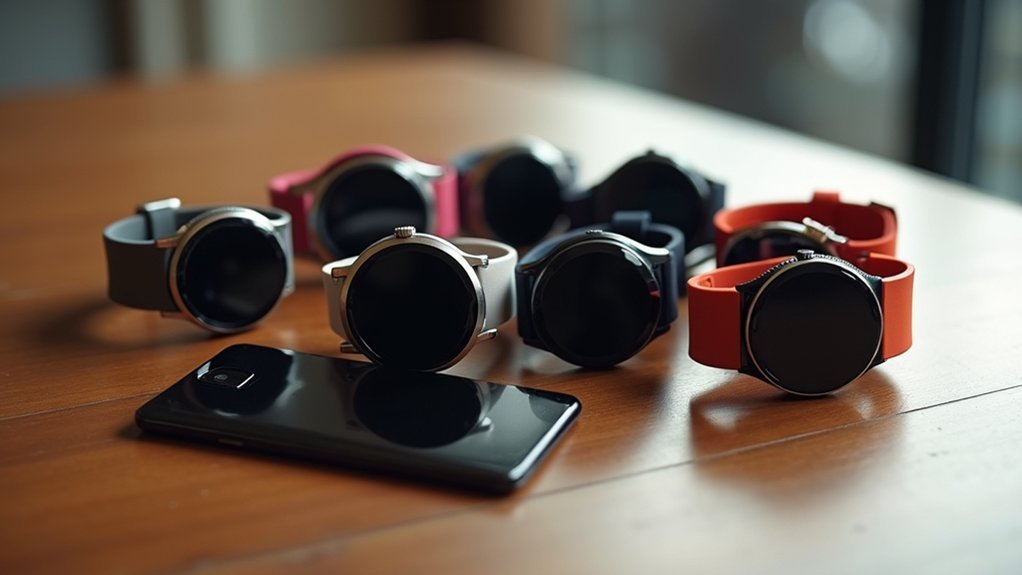
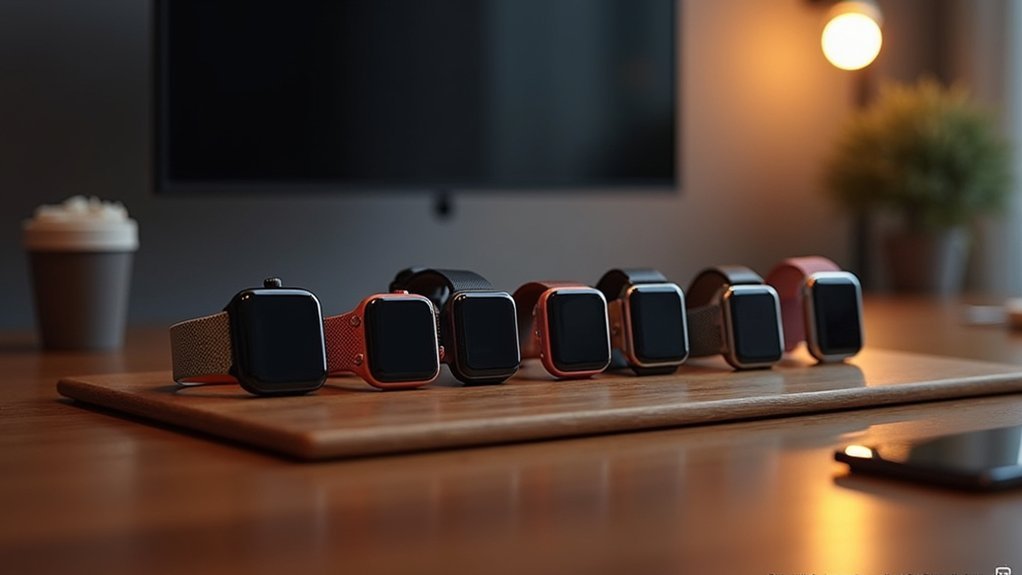
Leave a Reply